This idea started as a twitter thread. I started listing the various settings of D&D. That was both useful and a reminder of the limits of Twitter. What I ran into was the limited character count of twitter. This made me abbreviate the list in places where I shouldn’t have. I also failed to list a couple of major items. This post is part of my attempt to be more thorough.
Why do a list in the first place? I spend a lot of time reviewing older items to help me write new stuff. I also care about the history of the hobby. I have played D&D since the early 80’s and I saw so much of it come and go without actually pausing to take it all in. You miss stuff when you take things for granted. You should take the time to pause, review, and think about what has been done and what is left to do.
When I am making my own settings, I try to do something that isn’t just a rehash of what has been done before. Knowing the various settings help me avoid that, but it also stimulates my imagination in other ways.
I also kind of like to try and predict what Wizards is going to do next. They have recently released some things in TSR’s portfolio I never that they would. Things like Star Frontiers, Gama World, and Boot Hill seemed like they were gone forever. Many of us just accepted that the Magic settings would only get an occasional short PDF, at best, then Ravnica got published. Who is to say what will be the next thing they might pull out of the vault.
With all of that out of the way, lets look at how I plan on listing these. This will take multiple posts to get theeverything listed the way I want. I will start with the setting officially released by TSR or Wizards of the Coast as settings they created. I will also list the sub-settings within settings where they are to be canonically found. A lot of these can be found on DM’s Guild, if you are curious.
Then I will have a separate list of settings that TSR or WOTC did not create, but published for D&D through various agreements….or possibly less than legally as was the case in some early TSR products.
Official D&D Settings
Greyhawk
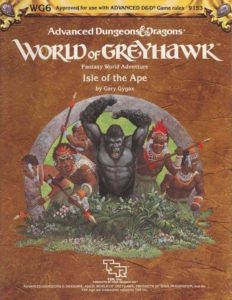 Began in 1972 as the setting Gary’s first game. Technically, Blackmoor was the first home dungeon/setting, but Greyhawk was mentioned in print first, and was the first campaign setting to get a publication of its own describing the setting. Blackmoor was added added as a region to the far north of Oerth. Greyhawk has a long history with a lot of the most famous characters and adventures being set there. It has not had any official publication support since 3rd edition days, though there was a Village of Hommlet adventure that received a very limited release in 4th edition. It is mentioned in 5th edition and there are some major characters in the newer adventures and supplements who are from Greyhawk, but no adventure or world details have been mentioned beyond that.
Began in 1972 as the setting Gary’s first game. Technically, Blackmoor was the first home dungeon/setting, but Greyhawk was mentioned in print first, and was the first campaign setting to get a publication of its own describing the setting. Blackmoor was added added as a region to the far north of Oerth. Greyhawk has a long history with a lot of the most famous characters and adventures being set there. It has not had any official publication support since 3rd edition days, though there was a Village of Hommlet adventure that received a very limited release in 4th edition. It is mentioned in 5th edition and there are some major characters in the newer adventures and supplements who are from Greyhawk, but no adventure or world details have been mentioned beyond that.
As far as the setting, it evolved over time. It is largely filled with the semi-generic fantasy elements we often associate with D&D. It is strongly influenced by western European naming and traditions. That makes sense given that the early creators were wargaming enthusiasts who read a lot of pulp fantasy. There are armies, knights, kings, peasants, merchants, and all of the middle ages accepted tropes about the world, from a European viewpoint. Add into that, large dungeons filled with monsters, powerful mages who influence the course of the world, and powerful supernatural threats the adventurers defeat. It is the first D&D campaign setting and many later settings followed its model. For all of that, the setting has surprisingly little detail when compared to other settings that came out later, but that is only in comparison.
This was certainly one of the settings I encountered early on as young player, but it is also one I haven’t played a lot in.
Sub-settings
None
The lack of sub-settings is largely due to changing product models, the declining popularity of the settings, and the already existing hodge podge nature of the setting. The setting did not have a lot of cohesive, well thought out, history, so every part was a little tacked on. For all of that, it is hard to overstate how much Greyhawk influenced everything after.
Mystara
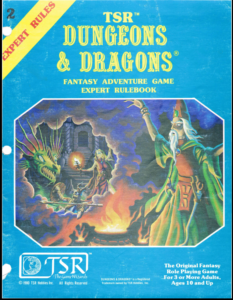 Mystara began, like Greyhawk, as the setting of someones home game in mid 70s. It first saw print in 1981 as the “Known World” in the Expert Set and the Isles of Dread module. It was later fleshed out with more adventures, more boxed sets, and the Gazetteers line of supplements. The Gazetteers detailed individual nations in Mystarra, concentrating on ones in a particular region of the world. The setting also included Blackmoor. This time as the kingdom in the distant past that used super tech and magic to cause a catastrophic disaster. There were a series of adventures which detailed that story. There were several sub-settings which were set in Mystara. It was originally only available for the D&D Box Set’s rules but later books did update portions of it fro 1st and 2nd edition Advanced Dungeons & Dragons. It never got revisited in 3rd edition or beyond. There is a VERY passionate and active fan community still writing material for it.
Mystara began, like Greyhawk, as the setting of someones home game in mid 70s. It first saw print in 1981 as the “Known World” in the Expert Set and the Isles of Dread module. It was later fleshed out with more adventures, more boxed sets, and the Gazetteers line of supplements. The Gazetteers detailed individual nations in Mystarra, concentrating on ones in a particular region of the world. The setting also included Blackmoor. This time as the kingdom in the distant past that used super tech and magic to cause a catastrophic disaster. There were a series of adventures which detailed that story. There were several sub-settings which were set in Mystara. It was originally only available for the D&D Box Set’s rules but later books did update portions of it fro 1st and 2nd edition Advanced Dungeons & Dragons. It never got revisited in 3rd edition or beyond. There is a VERY passionate and active fan community still writing material for it.
Mystara was an odd world. For one, it had no real gods. The setting, being grounded in the box sets version of D&D, had Immortals. Immortals were what powerful adventurers could eventually become, which had godlike powers. There was a whole different set of rules built around playing immortals, but the end result was that all the godlike beings in the lore started as adventurers and ascended to their position. The world was also hollow, which I will get into in the sub-settings, but there were openings at the poles. The inner surface was occupied and later detailed in its own line of adventures and supplements. It was large world and did not get fully explored by published material. The overall character of the main Mystara setting was, again, more or less based on European historical models. The few exceptions were an Arabian style culture, The Emirates of Ylaruam, an Native American style culture, The Atruaghin Clans, and a Mongol style culture often used as bad guys, The Golden Khan of Ethengar. There are also explicitly racial cultures for Elves, Halflings, Dwarves, Orcs, and Shadow Elves which are not like Dark Elves in other settings. Like Greyhawk, the setting has several instances of scifi elements worked into the fantasy. Radiation and alien equipment both make prominent elements in the setting.
Sub-Settings
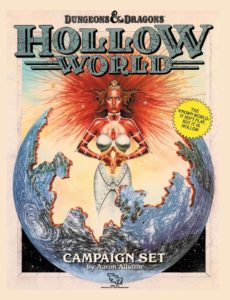
Hollow World
The Hollow World was an inner surface to the world which the Immortals often used to preserve civilizations that were destroyed on the normal surface of the planet. These cultures were kept almost like nature preserves with the immortals reinforcing their natural character for thousands of years, so they remain largely unchanged from when they come into the world. There are also certain magics that are inhibited in the Hollow World to prevent it from being discovered or exploited.
This sub setting got a boxed set, some adventures, and several gazetteer style accessories describing the setting in a fair amount of detail. The setting was teased and had many references to other Mystara setting books. It also included some elements “preserved” from the age of Blackmoor.
Savage Coast
The Savage Coast started as a setting for a few adventure. It is thousands of miles west of the original “Known World” portion of Mystara (ie the parts described in the Gazetteers) and it is much more lawless and uncivilized. it also likely not in the “current” known lands timeline.
There are adventures set here, various later updated almanac products, and the Savage Coast Campaign guide (which is not available on DM’s Guild apparently). It is also nominally the same setting as Red Steel, though Red Steel has some differences form what was published before.
Red Steel
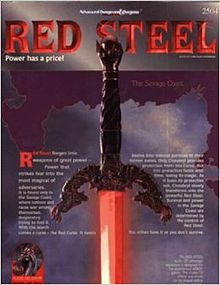 So, Red Steel and the Savage Coast go back and forth. They are the same, though there was some evolution along the way. Apparently the order works like this, First adventures set in the region came out, then there were some accessories which gave more details, the Red Steel campaign box came out, and then Savage Baronies, and then the Savage Coast Campaign guide, but by then the interest had waned. The setting involved a substance that gave you power but caused deformities. A special metal prevented the deformities if you had it on you if you were exposed to the Red Curse.
So, Red Steel and the Savage Coast go back and forth. They are the same, though there was some evolution along the way. Apparently the order works like this, First adventures set in the region came out, then there were some accessories which gave more details, the Red Steel campaign box came out, and then Savage Baronies, and then the Savage Coast Campaign guide, but by then the interest had waned. The setting involved a substance that gave you power but caused deformities. A special metal prevented the deformities if you had it on you if you were exposed to the Red Curse.
That is an overview of the Mystara setting. I have talked a lot about it on my Youtube channel. It was the first setting a got serious about early on in D&D. It has not been officially ported into any edition after 2nd. To be honest, the setting would need some reworking and tweaks to fit in with 5e, but not as many as some fans might think. I have seen some fan ports that amounted to trying to make 5e more like Box set D&D, which is not the approach I would take.
Forgotten Realms
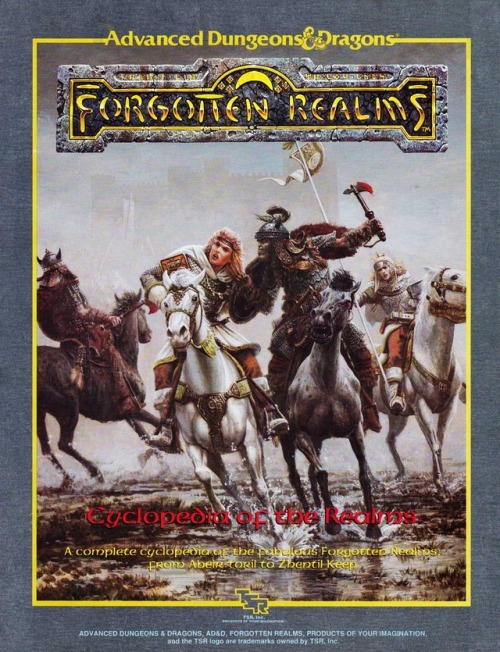 Forgotten Realms began in the late 60’s as the setting which Ed Greenwood used for writing his stories. By 1979 he landed a few articles in Dragon magazine describing monsters and later other things found in the setting. In 1987 it was officially released as the grey boxed Forgotten Realms setting for 1st edition Advanced Dungeons and Dragons. Since then, there have been literally hundreds of novels, nearly as many adventures, supplements, updated books for the new editions as they came out, some of the more famous D&D video games, several sub-settings, some great comics, and is currently the default setting for D&D 5th edition. Of all the official settings, none have had more written about them than Forgotten Realms. It is also one of the settings available on DM’s guild. You can actually write and publish your own additions to the Realms.
Forgotten Realms began in the late 60’s as the setting which Ed Greenwood used for writing his stories. By 1979 he landed a few articles in Dragon magazine describing monsters and later other things found in the setting. In 1987 it was officially released as the grey boxed Forgotten Realms setting for 1st edition Advanced Dungeons and Dragons. Since then, there have been literally hundreds of novels, nearly as many adventures, supplements, updated books for the new editions as they came out, some of the more famous D&D video games, several sub-settings, some great comics, and is currently the default setting for D&D 5th edition. Of all the official settings, none have had more written about them than Forgotten Realms. It is also one of the settings available on DM’s guild. You can actually write and publish your own additions to the Realms.
The character of the setting is a little more organized than Greyhawk which pretty much evolved as games were played. Forgotten Realms changed over time, as well, but there was some thought given to world building first. It is largely still a generic setting inspired by western European myth and history. There are other non western settings, but, especially early on, they are more stereotypes than actual reflections of Asian, Native American or African cultures. That said, it is largely treated as a generic fantasy setting with many areas to reflect the sort of game you want. There are sub settings for specific cultural touchstone. If your interested in Japanese style culture you can explore Kara Tur. If you want Arabian style culture, you can visit Calimshan or the full sub-setting of Al Quadim. It is very much the setting you can use as a basis to almost any game. There is high magic locations like Halruaa or the subsetting in the past, Netheril. There is the mysterious celtic flavored Moonshae islands, Waterdeep for big urban adventures, Maztika for a Mesoamerican feel, and enough ancient dungeons to satisfy anyone. The setting is so diverse it is indeed hard to say what its essential elements are.
The one recurring element, which sometimes draws criticism, is the Realms Shaking Event. There are cataclysmic meta storylines that happen pretty much any time there is a new edition to D&D. These events are often used as in character explanation for why the rules are different now. These can include gods dying, massive upheavals, and terrible plagues.
Sub-Settings
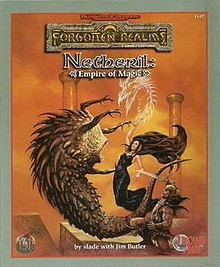 Netheril
Netheril
Netheril is an ancient lost human empire in the Forgotten Realms. It was an age of high magic where the spellcasters ruled from flying cities and the lower classes we confined to the earth below. There is certainly a theme of hubris to this setting as it ends with a wizard deciding he wants to be the god of magic and causes the empire to fall in the process. This setting is 5000 years before the “current” Realms, which makes this a very unusual Sub Setting. Most of the others on this list are just a section of the overall world that is separated from the rest of the “main” setting for what ever reason.
The Netheril Empire of course got mentions in adventures and supplements in the past, but in 2nd edition D&D it got its own box set with details about the setting and new rules for using higher level magic. There were also some adventures set in the time period. Beyond these products, however, the sub setting hasn’t really been revisited since, though some of the 3rd edition books did give details in a historical sense.
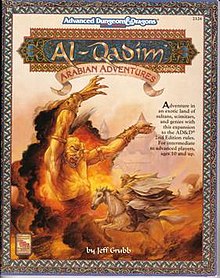 Al Qadim
Al Qadim
Al Qadim, Land of Fate is an interesting little tale in itself. The original box was published in 92 and did not have the Forgotten Realms trade dress on the cover. What is more, it was filled with rules variations that make it feel like a very different thing than Forgotten Realms. It was intended to be something you could run on its own, or dropped into any setting, but it is still canonically Forgotten Realms on the peninsula on southern Faerun called Zakhara. It is very much in the vein of the Arabian Nights. There is a single empire with a single faith(Polytheistic, but one religion).
This world got a lot of products made for it. Multiple adventures, some of which were boxed. A couple of campaign setting boxed sets, and various other supplements besides. These days it is considered part of the Realms proper and there are plenty of people on the DM’s guild writing content for it.
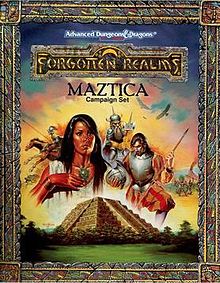 Maztica
Maztica
Maztica was released in 1991 and it is a rare Mesoamerican based fantasy setting. The inspiration was pretty clearly Aztec and Mayan cultures. They are portrayed as having brutal bloodthirsty gods. There are some unfortunate stereotypes about indigenous cultures tossed in there, but it is not as bad some. There is a built in conflict with the people who are from the rest of the known Realms who have come to colonize and exploit the region. it is to the far west of the Sword Coast and the colonists come from Amn, a prominent nation in Faerun.
The setting did get a full box set, adventures, and a trilogy of novels. The setting was wiped out in 4th edition as the world of Toril and Abeir merged. Since then it was mentioned in the 5th edition books so it appears to be back thought there is no real official content about it since its return. I understand there are some DM’s guild stuff for it, though.
 Kara Tur, The Horde, and Malatra
Kara Tur, The Horde, and Malatra
Kara Tur is another odd one on this list. The original setting description appeared in the Oriental Adventures and in an adventure, without any other setting details mentioned. It could have been in Greyhawk or any other world for that matter. It was not until the Forgotten Realms set came out that it was placed in the Realms proper. It is to the extreme far east of Faerun. It was originally very much based on the “exotic” fantasy east, mostly on Japan with some Korean and Chinese elements tossed in. The adventures expanded on that theme. The box set actually did expand those element tied to the rest of Asia. With the Horse Planes(Mongolia), Tabot(Tibet), the Jungle Lands(Indochina) and other Asian analogs.
Later products fleshed out the Horse Planes which and the barbarian Horde found there. There was a boxed set describing the campaign of the Horde’s conquest of the east. The Kara Tur setting was actually larger than the rest of the described world. It was so large they eventually reduced the size in the Horde box set. The Malatra setting was a “Living Campaign” in what the Kara Tur setting called the Jungle Lands. I did not play in this setting personally, but the notion they did a South East Asian style setting is super interesting to me and I want to track down the things written about it. It does not appear that any of that has made its way to the DM’s Guild however.
The thing with Forgotten Realms is that the overall setting lacks a real overriding theme or style. It is rather deliberately generic western fantasy tropes. There is nothing with that. It was the playground in Ed Greenwoods head. After it was published it gained various distinctive elements in the various regions it covers. Some of that comes from the different writers who contributed, and the shifting needs of the publishers. Some of that is in the novels which were written. Now it is the “core” D&D setting and all the core rule books are written with it as the assumed world the characters play in. If you want to make a D&D game from scratch, the setting is a good starting place. All the current adventure published by Wizards of the Coast happens there.
Dragonlance
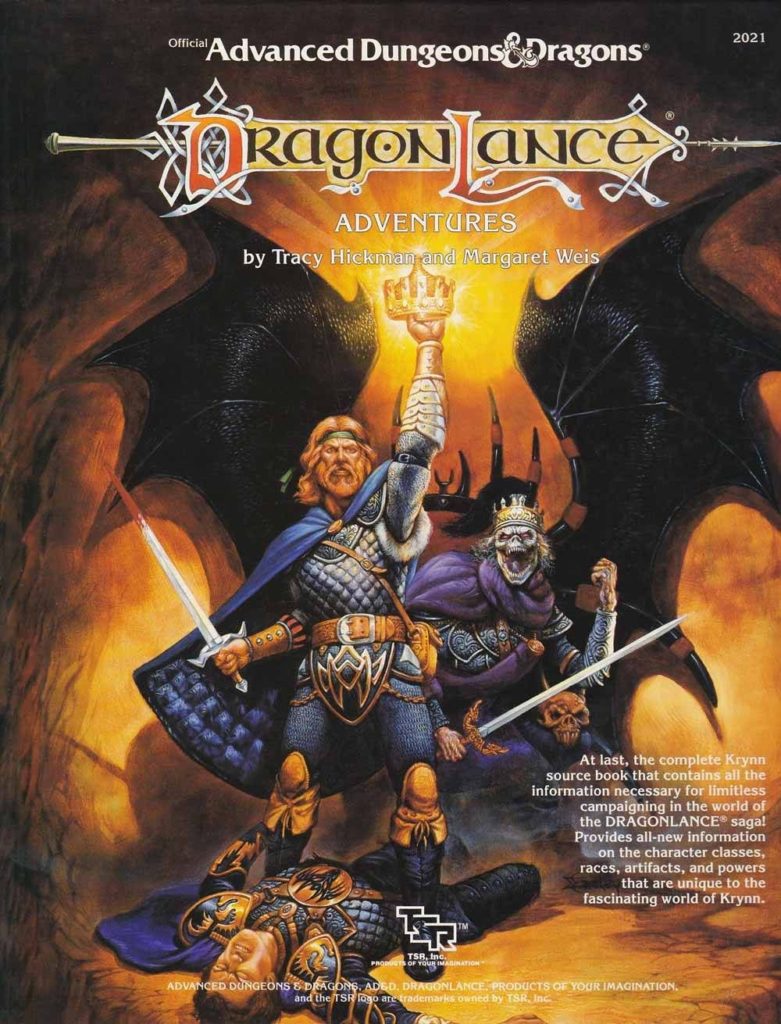 Dragonlance was born with the adventure, Dragon of Despair. This was part of a conspiracy in the TSR writing staff to make dragons cool again. What was originally conceived as a 3 part adventure turned into twelve, plus fiction and suddenly Krynn became a core setting to D&D. Margaret Weis and Tracy Hickman came up with a compelling world to play in, became successful authors, and left TSR. By the time they did, their creation became one of the more beloved settings in gaming.
Dragonlance was born with the adventure, Dragon of Despair. This was part of a conspiracy in the TSR writing staff to make dragons cool again. What was originally conceived as a 3 part adventure turned into twelve, plus fiction and suddenly Krynn became a core setting to D&D. Margaret Weis and Tracy Hickman came up with a compelling world to play in, became successful authors, and left TSR. By the time they did, their creation became one of the more beloved settings in gaming.
Krynn is again another western European style There are two continents Ansalon and Taladas, with minotaurs as prominent race on the later. They do introduce a few new races. Kinder which are more or less like halflings only they culturally are all kleptomaniacs.
The early setting was mainly carried by the adventures, with some adventures giving detail about different regions. There was also an Atlas published, several novels and short stories, and eventually the hardbound book all in first edition. By the time the first edition Dragonlance Adventures book had come out, Weis and Hickman had left the company to be fiction writers full time.
In second edition, Dragonlance seemed to struggle to find its footing. There were several 2nd Edition boxed sets. There were adventures and supplements published. They also had a SAGA rules version of Dragonlance set 30 years after a cataclysm in Krynn. SAGA was a diceless system using cards for resolution mechanics and eventually that line died. There was talk of there not being any more Dragonlance for a while after that, due to lack of sales.
When 3rd edition edition came along more was produced for Dragonlance including a new Campaign Guide helmed by Margaret Weis. This was actually put together by their separate publishing company, Sovereign Press. Weis and the folks at Sovereign Press produced quite a few books for Dragonlance as 3rd party publishers under license from Wizards of the Coast. In 2007 they did not renew their license and we haven’t seen anything new out of Dragonlance since.
Sub-Settings
The Fifth Age or The Age of Mortals
It is hard to really call any of the various books for Dragonlance “sub-settings” There are two continents Ansalon and Taladas, with minotaurs as prominent race on the later. The real subsettings are based on the era’s of the world of Krynn. During the War of the Lance is when most of the more famous novels and early adventures happen. It culminates in a Chaos War and vast cataclysm occurs. The Fifth age or Age of Mortals setting is after all of that and a lot of the magic in the world is burned out.
The Fifth Age was released as part the SAGA system and died when that system died. When Margaret Weis licensed the Dragonlance Setting, one of the supplements they published was the Age of Mortals which details the same age only a little bit later in the era. There were adventures and other supplements published in that sub-setting as well.
The thing with Dragonlance is the core story. There is a lot of it. People love the story of the novels and they go hand in hand with the published adventures. The story told in those adventures and in the early novels is pretty epic. They followed it up with a bunch of equally loved novels and comics by other creators. There are a lot of people who discovered D&D through Dragonlance. And that is awesome. Personally, I never connected as much to that setting. I thought some of the concepts sounded great…I read the first adventure and thought it was pretty neat…..
I tried to read the first novel and…
don’t hate me….but I didn’t like it.
It felt super clumsy and poorly put together even to my younger self. As it happens, I have since heard Tracy Hickman say it was not a great book and wouldn’t be the one he would start people with. Not buying into that first novel sort of made it hard to buy into the setting as a whole. I have read several of the setting books in the past and it is a well built world, but yeah, it is not one I spent a lot of time with. I need to go back and revisit the novels. I have heard they do get better. My personal experience aside, the setting is clearly important to D&D’s history and I a little surprised it has not bee revisited yet in 5e.
What’s next?
Well, for those playing at home, this is obviously not ALL the official settings for D&D. Heck, it isn’t even all the ones that were published by TSR. I will be putting up part 2 next week. That will cover Brithright through Ravnica. That is a lot of territory to cover so there will need to be at least a third post to talk about the meta settings, such as Ravenloft and Planescape.
I hope all of this was useful or at least interesting. I love doing research.
[…] this is part two of my review of the official settings of D&D. The first one I covered Greyhawk, Mystara Forgotten Realms, and Dragonlance. The first three were developed as […]
[…] time to resume my exploration of the many official settings of D&D. My previous posts (found here and here) listed the more traditional settings. Today I am going to write about the […]
[…] managed to get most of the big ones. The ones I missed were the sub-settings (subsets of the larger settings), meta-settings(settings […]
[…] in this case, we are wrapping up our look at official D&D settings (The first post found here) by looking at the licensed setting. These are officially published settings based on previously […]